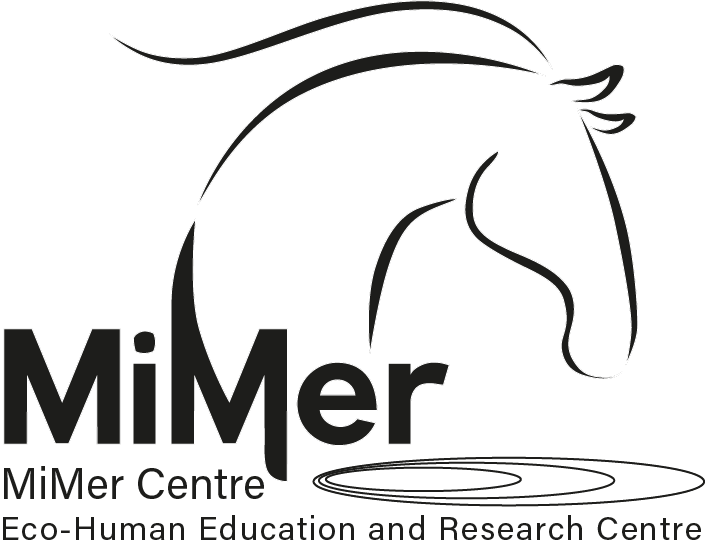The first time I met horses that were not domesticated or tame, and did not live in a zoo, was on a course in the Netherlands in 2013. I had for a while been following Francesco de Gorgio and José Schoorl (now de Gorgio-Schoorl) at Learning Animals and now, I wanted to meet them and see if they shared similar ideas about horses and nature that I had. And they did, but I was never comfortable with being their student, as nothing of what they talked about was new to me, and I was not looking for teachers or mentors (or gurus), but likeminded people to have interesting discussions with and exchange ideas with, perhaps to go on adventures with. This is part of my problem with myself and the world. I am not your typical student. I often want more, and I often need to hold back on what I already know to not be disturbing other people’s learning. So, instead of making myself and others uncomfortable, it made sense that I started my own education and research center – our own MiMer Centre.
But meeting Francesco and José brought a very good thing to me! They introduced me to the idea of studying feral living horses. By taking me and the rest of their study group at the time, to meet a mall group of Konik horses living in a small nature reserve in the Netherlands. We did not go to the big nature reserve, the Oostvaardersplassen, but to a much smaller one, where only about 20 Koniks lived.
And Francesco did a small novel object test to show us that feral living horses behave differently from most of our domestic horses. That feral living horses are much more curious and that they use their senses differently. And they apparently did.









